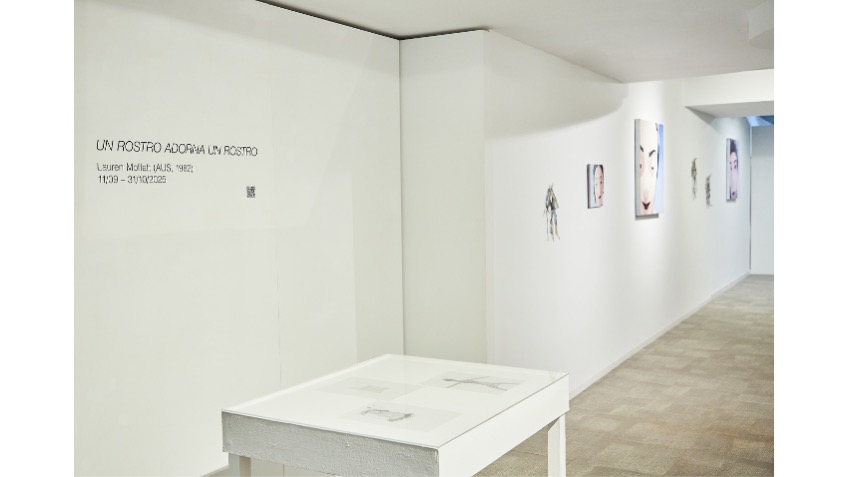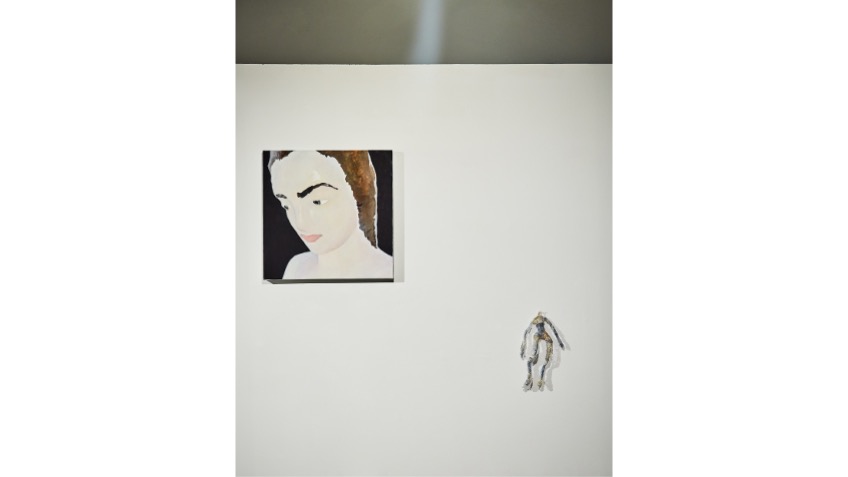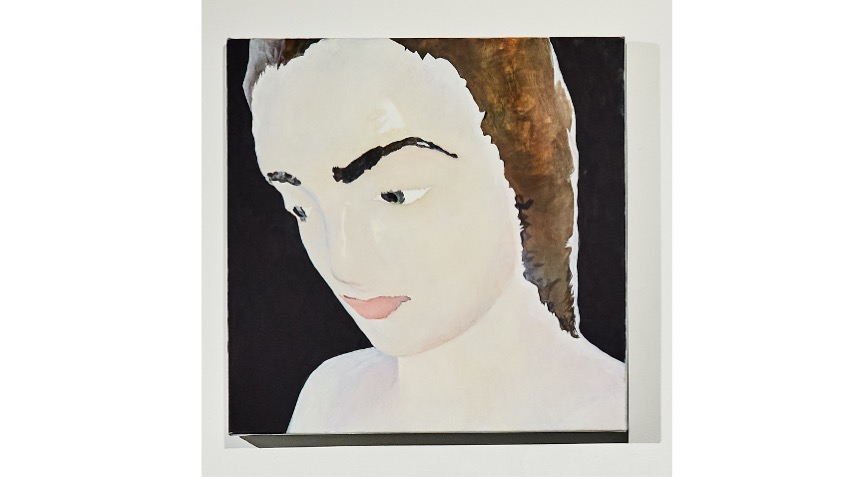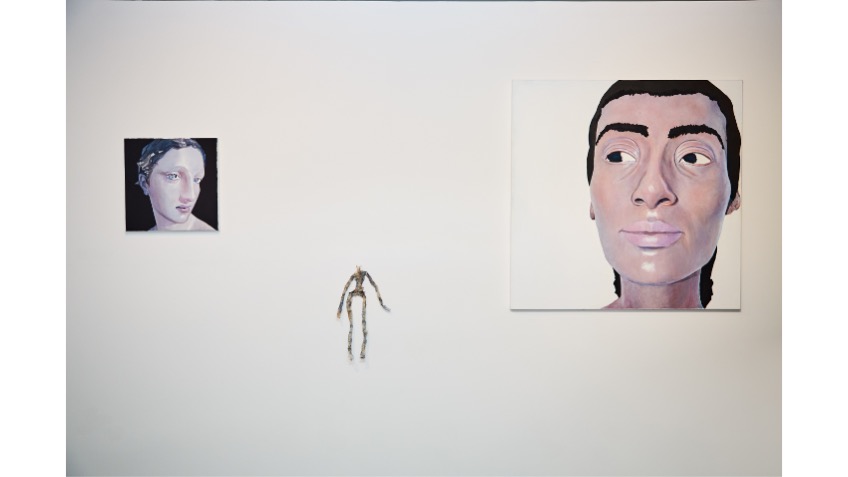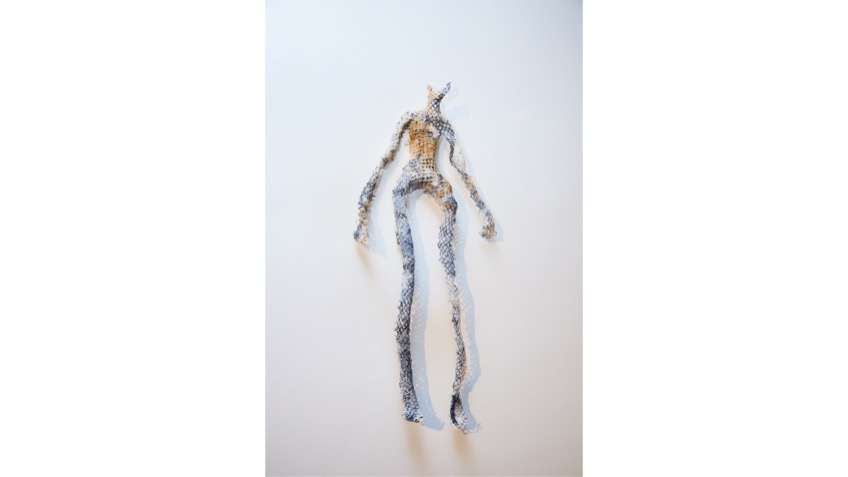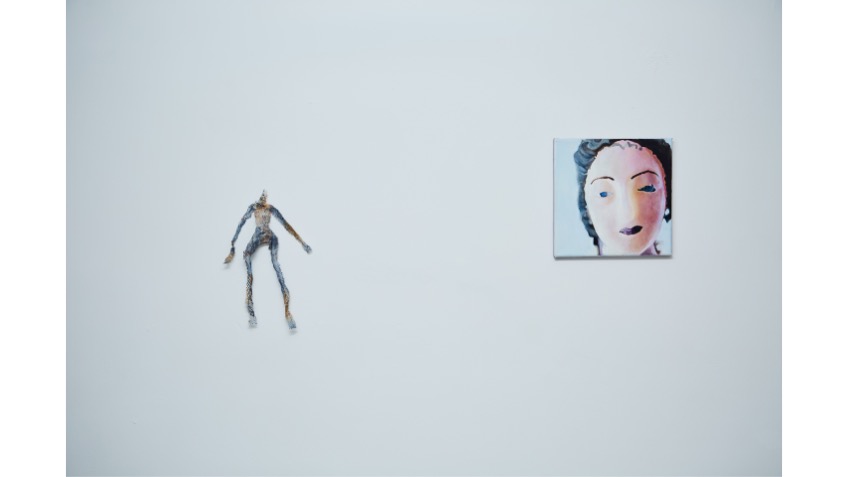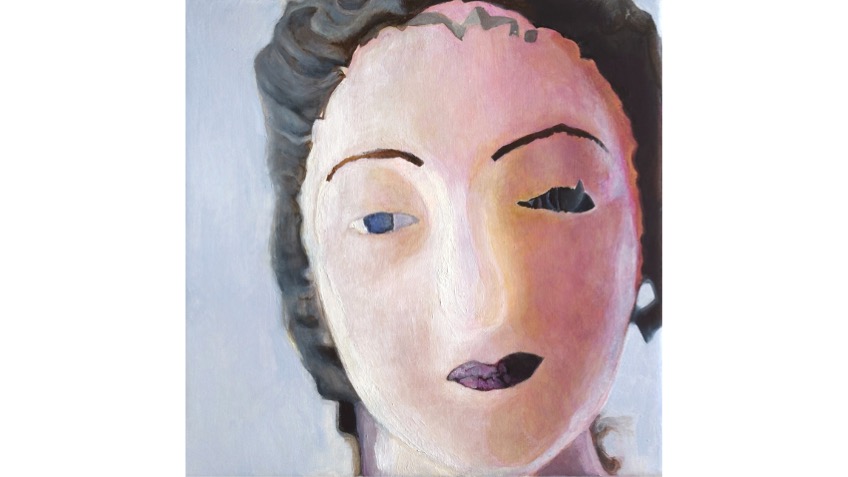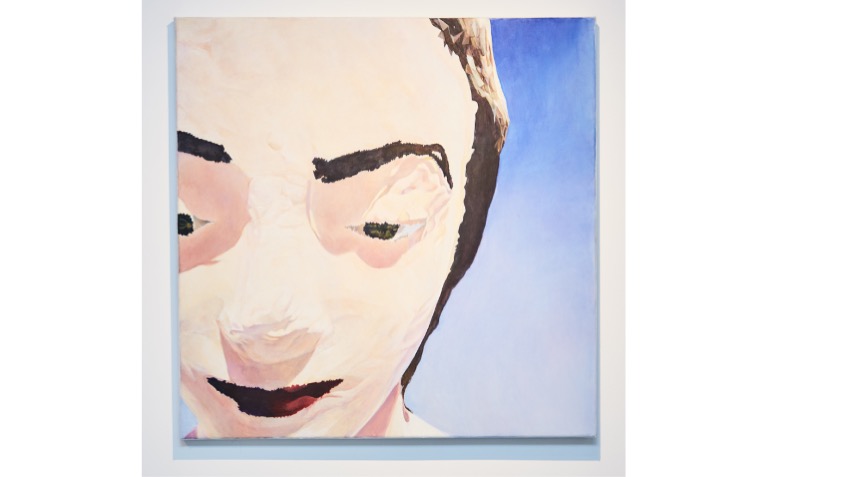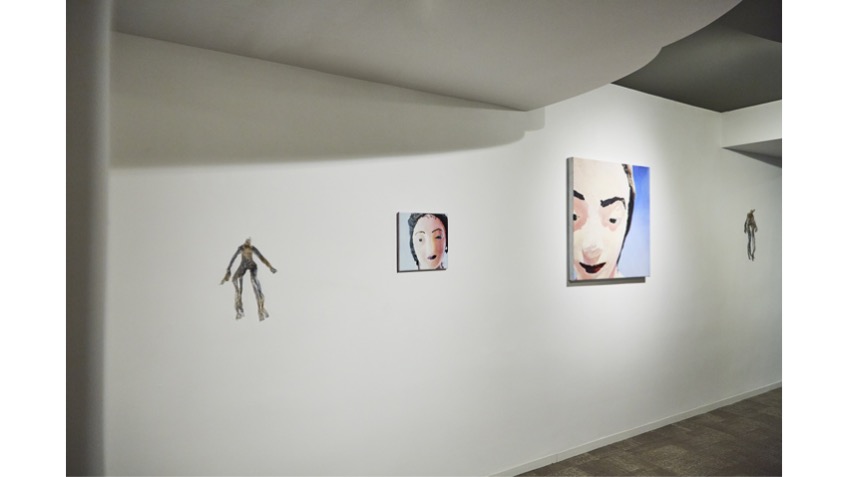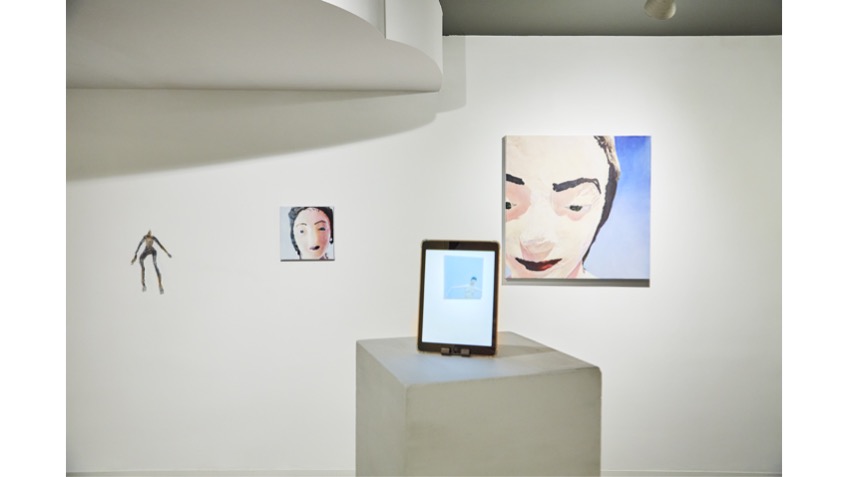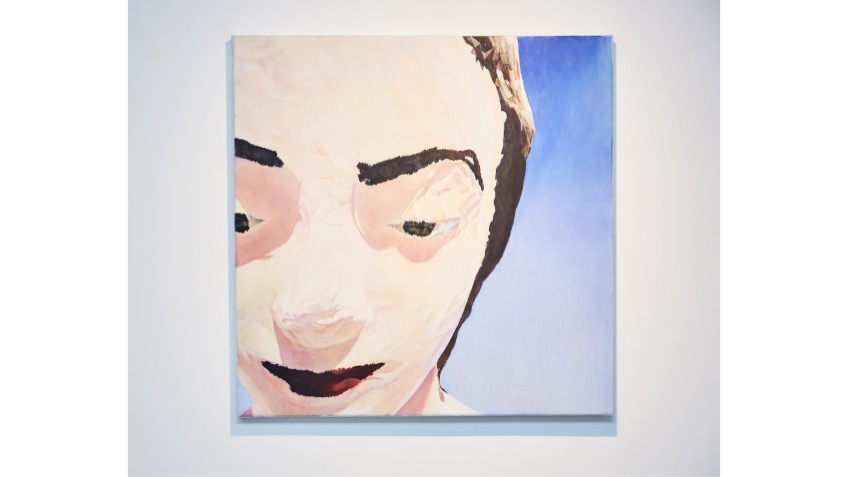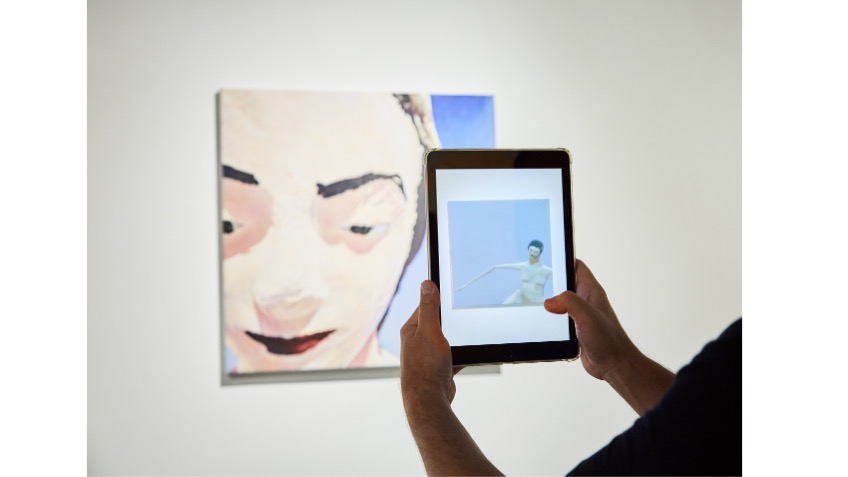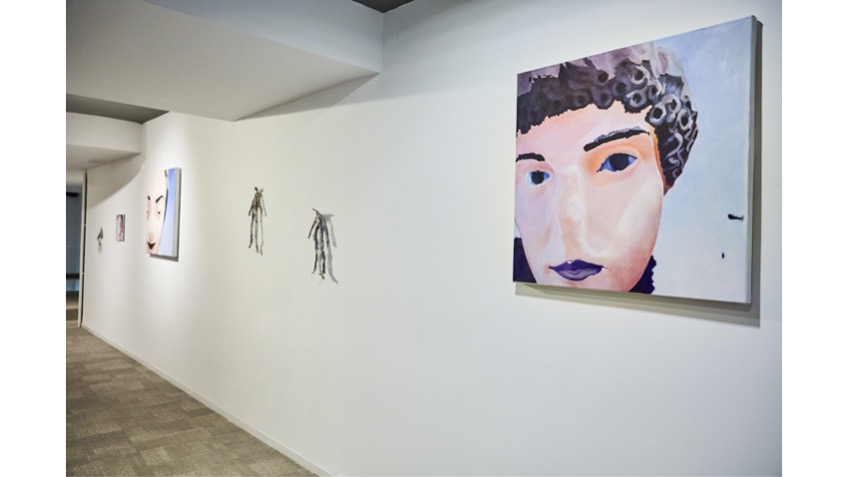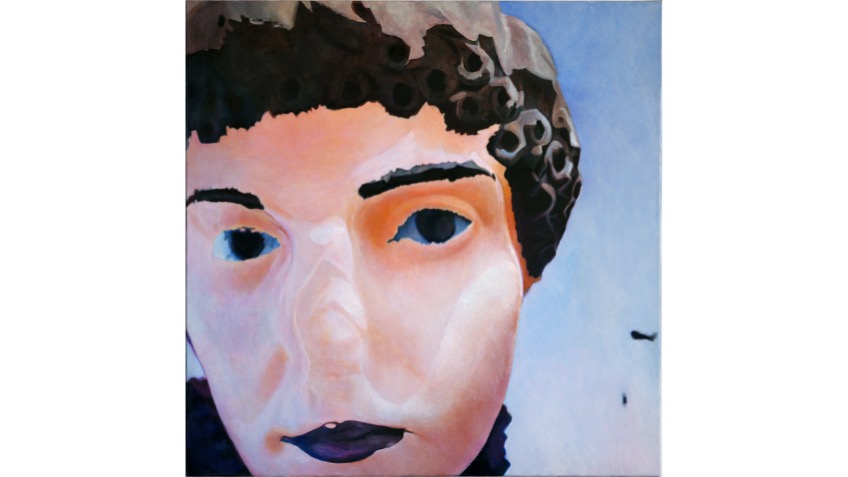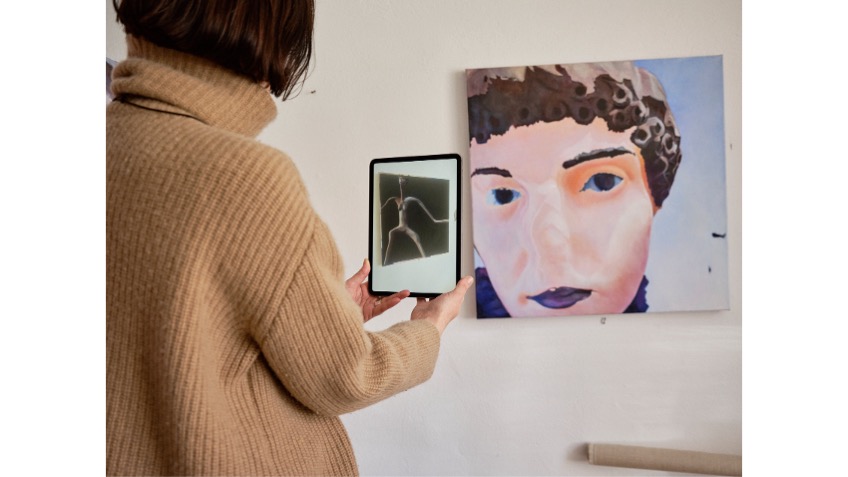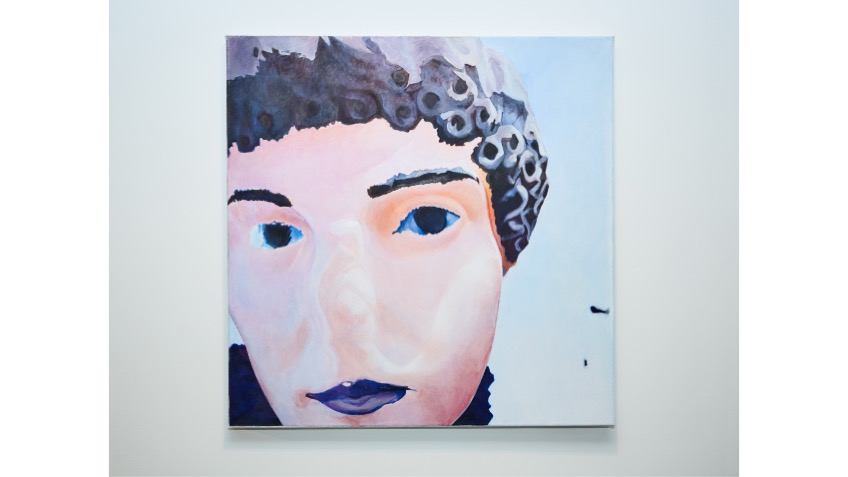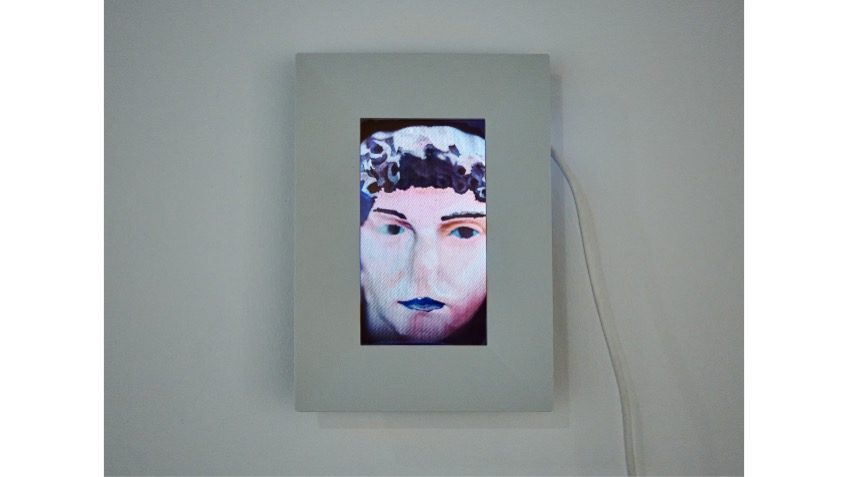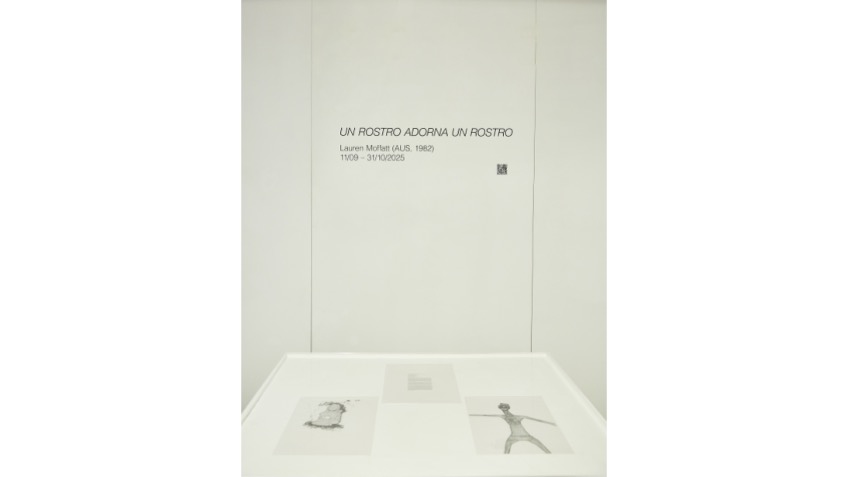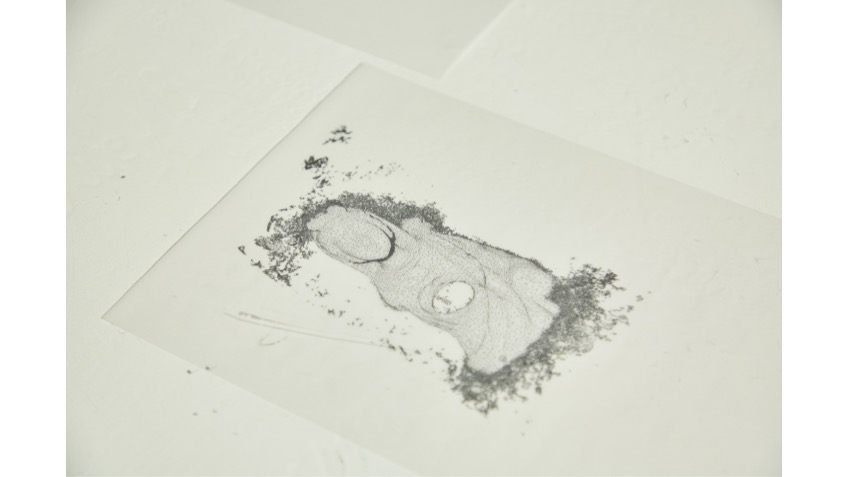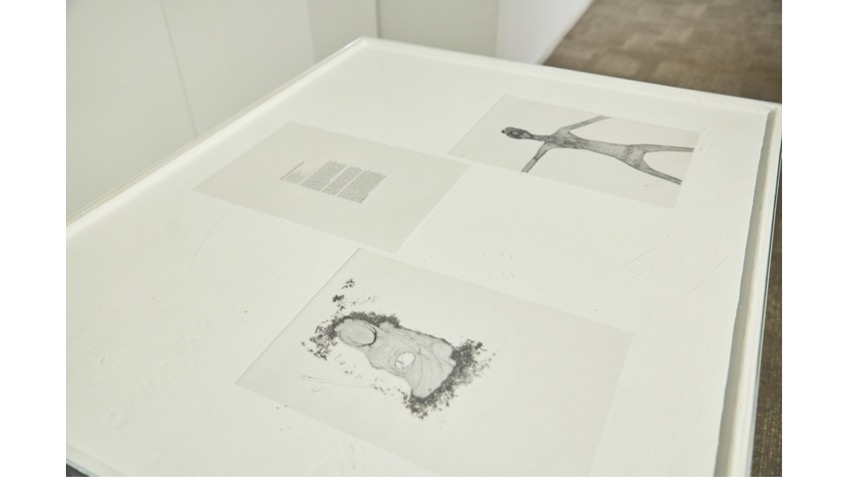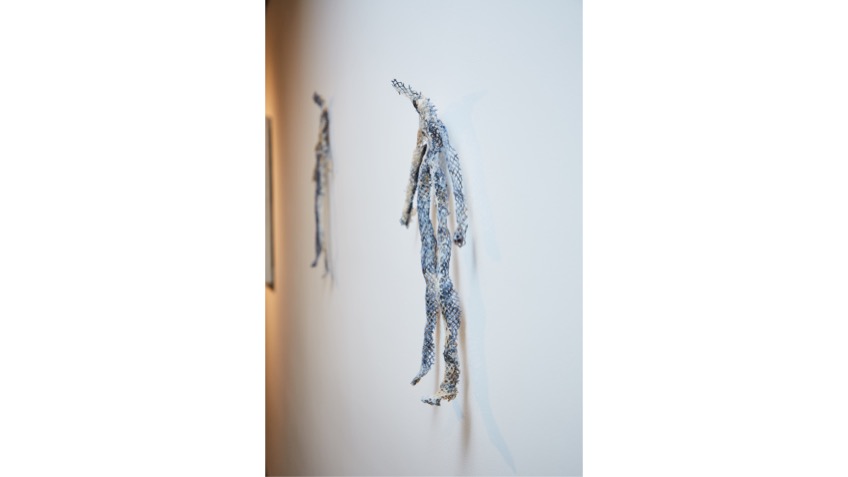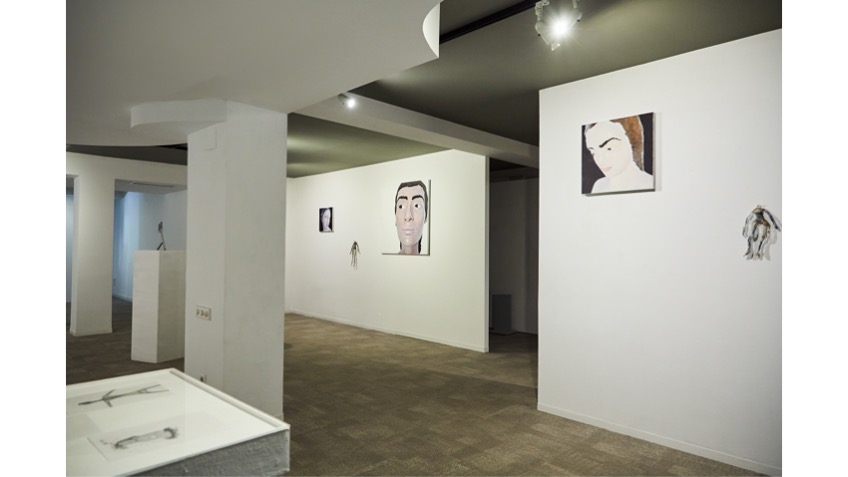Un rostro adorna un rostro
Lauren Moffatt
from September 11, 2025 to October 31, 2025
Freijo Gallery presents Australian artist Lauren Moffatt's first solo exhibition in Spain, as part of Apertura Madrid Gallery Weekend. Moffatt presents a series of works in which painting serves as an initial medium from which to address the issues raised by new technologies. In a hybrid work, Moffatt's canvases and her characters acquire a new dimension through augmented reality.
In 3D modelling, the term ‘mesh’ refers to the collection of vertices, edges and faces that define the shape of a 3D object in a digital environment. When we scan something in 3D, the result is a mesh and, for example, Face ID on Apple devices such as those used in the exhibition works by using the camera to create a 3D mesh of the user's face and comparing it to a previously saved mesh to determine if it is the person who has permission to access the information on the device. Virtual worlds, like those in video games, are defined by meshes: human meshes, architectural meshes, botanical and zoological meshes, embedded in simulation systems that control how their surfaces react to light and atmospheric conditions. To a machine, our world could be seen as a collection of meshes, like a sculpture park.
The behaviour of these meshes can be observed and used as data to create more meshes. In 3D artificial intelligence frameworks, AI models trained on large datasets of existing 3D mesh data, often from video games, can learn and replicate exaggerated female characteristics (e.g. large breasts and buttocks, small waists) due to biased training data, leading to the generation of stereotypical and unrealistic meshes. Are women in virtual environments predestined to be fakes and partial truths, just as they have existed in physical history?
What is the substance behind the mesh that makes us more than a collection of dots in space? A portrait is an attempt to capture this essence, but this human process of perception and reproduction is also prone to bias, ignorance and ulterior motives. Beyond Her Mesh presents a series of found portraits of women: statues and carvings of anonymous and recognisable women from history that were first 3D scanned, then edited in 3D software to replace the stone and wood of their origin with skin. They were given new bodies augmented with skeletons that allow them to move, and each was given her own dance. These new Frankenstein-like hybrids were then virtually photographed and painted by the artist and subsequently fed into a simulation system that exists behind the surface of these paintings, accessible through augmented reality. Each figure in the installation represents a multi-layered portrait forged from a dialogue between surface and imagination.

